I love this magazine. I base most of my knowledge on what I’ve read in its pages. However applying this knowledge to working wood in the southern United States is a constant battle for. Mainly on outside projects. Charleston, SC (not where I live) has many a beautiful wooden gate. Some dating back to the time this country was born. They can last in this climate, yet somehow mine don’t. I’ve tried a great deal of things but each has failed and I’m running short of ideas. Recently (if you call the past year and a half recent) I’ve built a set of gates for a family in Columbia, SC. With is 98 degree weather in the summer and 90% it makes for a real challenge to get something to work. Even in the winter time it presents challenges with weather that can reach the teens and relatively no humidity. The first gate which is in the pictures was made of cypress. I did frame and panels with the appropriate gaps yet the joints still separated. I did floating tenons thinking they would best for the inevidible movement that they would need to endure. No dice. The joints failed and everything started to come apart. I even used epoxy for the joints thinking that the sun weaken regular PVA glue. After looking at the gate once it had gone through one summer in this town it was clear that the tenons I made were nowhere near large enough for such a large gate (the gate is roughly the size of a sheet of plywood). That was the first failure. So I tried a different approach. I decided to make the gate entirely of plywood. Much like an earlier Tools and Shops (I can’t recall the issue) with the workbench for under $250, I made a layered construction forming the mortise and tenons with plywood. I don’t have any pictures to describe this but it was a sandwich of 3/4″ plywood and 1/2″ plywood. The tenons were 1/2″. Now this has been set outside for at least two months and now, as I expected it is coming apart at the seams. So, solid wood moves to the point that it tears itself apart and the layered construction isn’t fairing well either. Anyone else out there tyring to build outdoor projects in the bloody hot south?
Discussion Forum
Get It All!
UNLIMITED Membership is like taking a master class in woodworking for less than $10 a month.
Start Your Free TrialDiscussion Forum
Digital Plans Library
Member exclusive! – Plans for everyone – from beginners to experts – right at your fingertips.
Highlights
-
Shape Your Skills
when you sign up for our emails
This site is protected by reCAPTCHA and the Google Privacy Policy and Terms of Service apply. -
 Shop Talk Live Podcast
Shop Talk Live Podcast -
 Our favorite articles and videos
Our favorite articles and videos -
E-Learning Courses from Fine Woodworking
-


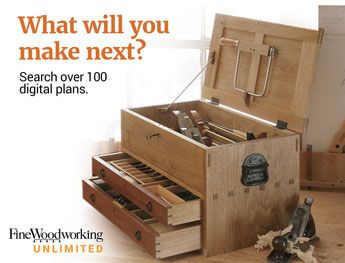









Replies
I have made outdoor gates and benches for both California and Fort Lauderdale and step boxes and rocket launchers for offshore fishing boats. I use 8/4 teak for the backs, legs, and arms, and 4/4 for the seats. I use West System epoxy for the joints. The trick to having the joints hold, as told to me by professionals who work with teak for fighting chairs in offshore fishing boats (the worst environment of all), is to use Colloidal Silica for the filler, mix the resin and hardener thoroughly then mix in the filler. Filler should be added until the consistency matches peanut butter. I have always made the tendons 1/3 of the thickness of the receiving part. After using the colloidal silica, NOTHING has ever come a part....... The oldest are 15 years old and counting....
I tried the silica but it seemed like it made the parts brittle. The folks who I built the gate for couldn't afford teak, so they wanted cypress instead. It seems to be that the would starts to acclimate and change withthe environment once outside. Cupping, twisting, whatever. It does what it wants to do.
Do you do anything special with the tenons? Wedged or floating? Thanks for your help.
pegs
Have you tried pegging the tenons? Living in the South myself, that seems to be the answer for me. Icy winters and hot, humid summers. I had to think what was available a century or so ago and why do those projects last? They didn't have the fancy epoxy, or the many choices of glue. I came up with pegging the tenons. I've not tried hide glue yet, but maybe one day...
This forum post is now archived. Commenting has been disabled